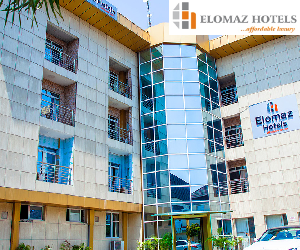On May 29, 2023, President Bola Ahmed Tinubu assumed office and immediately announced the removal of Nigeria’s decades-long fuel subsidy, declaring, “Subsidy is gone!” This bold move, coupled with the unification of the foreign exchange market, marked the cornerstone of his administration’s economic reform agenda under the “Renewed Hope” vision. Two years later, as Nigeria navigates the aftermath of these seismic policy shifts, the question remains: have these reforms delivered the promised relief, or have they inflicted harm on a nation already grappling with economic fragility?
The Case for Reform: A Necessary Evil?
Tinubu’s administration inherited an economy teetering on the edge. The fuel subsidy, costing Nigeria an estimated $10 billion in 2022 alone, was riddled with corruption and drained resources from critical sectors like education, healthcare, and infrastructure. The multiple exchange rate system fueled arbitrage and deterred foreign investment, while the nation’s debt service-to-revenue ratio hovered at an unsustainable 97%. Tinubu argued that these distortions had to be addressed to avert fiscal collapse and restore Nigeria’s economic credibility.
The subsidy removal freed up significant funds, with monthly allocations to federal, state, and local governments soaring past the N1 trillion mark. By the end of 2024, state revenues had increased by over N6 trillion, enabling subnational governments to reduce debt burdens and invest in infrastructure. The Nigerian National Petroleum Company (NNPC), unburdened by subsidy costs, became a net contributor to the Federation Account, and local refining bolstered fuel supply security. Economic indicators reflect some progress: GDP growth reached 4.6% in Q4 2024, the highest in a decade, and foreign reserves climbed to a 33-month high of over $23 billion. The World Bank projects Nigeria’s growth to hit 3.7% in 2025, signaling macroeconomic stabilization.
Tax reforms have also shown promise, raising Nigeria’s tax-to-GDP ratio from 10% to 13.5% in a year. Essential goods like food, education, and healthcare now attract 0% VAT, and targeted incentives support agriculture, manufacturing, and technology sectors. Infrastructure projects, such as the Lagos-Calabar Coastal Road and the Abuja metro rail, are progressing, while initiatives like the Nigerian Youth Academy and the student loan scheme aim to empower youth and expand access to education. These achievements paint what some call the “rosy view” of Tinubu’s reforms; a narrative of a bold reformer delivering long-term gains.
The Harsh Reality: A Nation in Pain
Despite these macroeconomic strides, the “dim view” of Tinubu’s reforms resonates loudly on the streets of Lagos, Kano, and Port Harcourt. The abrupt subsidy removal sent fuel prices skyrocketing from N187 to over N900 per litre overnight, triggering a cascade of economic hardship. Food inflation surged, with a loaf of bread, rice, beans and other staple food nearly doubling in price since May 2023. Transport costs soared, and the naira’s depreciation following forex unification exacerbated the cost-of-living crisis, pushing 150 million Nigerians into multidimensional poverty.
Critics, including the Nigeria Labour Congress (NLC), argue that the reforms have recycled “failed neoliberal experiments,” deepening inequality and enriching a few while impoverishing the majority. The promised palliatives, such as N25,000 cash transfers to 15 million households have been poorly implemented, with only 1.7 million beneficiaries by December 2023. The introduction of Compressed Natural Gas (CNG) buses to ease transport costs has been hampered by inadequate gas infrastructure. Meanwhile, a new minimum wage of N70,000, secured through labor strikes, offers little relief against double-digit inflation.
Read also:
- Ex-EFCC boss Bawa exposes multi-billion naira fuel subsidy fraud in new Book
- “Was There Ever Electricity Subsidy in Nigeria?” Nigerians slam FG over fresh tariff hike
- Subsidy removal: Navigating the economic hardship, social impact
The informal sector, the backbone of Nigeria’s economy, faces additional strain from new taxes, such as value-added taxes imposed on market women. Small and Medium Enterprises (SMEs) struggle with rising operating costs, particularly in logistics and agro-processing. The Lagos Chamber of Commerce and Industry (LCCI) notes that while reforms aim for long-term stability, they have imposed short-term hardships on businesses and households. Public outrage has also been fueled by government spending priorities, such as the purchase of a presidential jet, which starkly contrasts with the economic struggles of ordinary Nigerians.
However, of great concern is the usage of the increase in revenue to state and local governments. While some states have made significant progress in infrastructural development, a vast majority of states seem to lack the necessary vision to use this window of opportunity to improve people’s welfare and turn around infrastructural deficits in the home states.
A Balancing Act: Progress Amid Discontent
The divergent views on Tinubu’s reforms highlight a fundamental tension: macroeconomic gains versus immediate human suffering. The administration’s defenders argue that reforms are not “shotgun exercises” but long-term strategies requiring patience. The elimination of subsidies and forex distortions has attracted over $8 billion in oil and gas investments and strengthened Nigeria’s fiscal position. Yet, the lack of effective cushioning measures and poor policy coordination, such as the simultaneous implementation of subsidy removal and naira flotation has amplified the pain.
The NLC and other critics contend that the government’s failure to prioritize social safety nets and transparent use of subsidy savings has eroded public trust. Labor leaders accuse the administration of suppressing dissent, with workers demanding a living wage met with “batons and threats.” Posts on X reflect widespread frustration, with users decrying the lack of tangible benefits from subsidy savings and accusing the government of mismanaging funds.
The Path Forward: Bridging the Gap
Tinubu’s reforms have laid a foundation for economic recovery, but their success hinges on translating macroeconomic gains into tangible relief for Nigerians. Experts suggest scaling up social safety nets, such as expanding cash transfer programs and ensuring transparent distribution of food palliatives. Investments in infrastructure and education must prioritize job creation and affordability to address youth restiveness and poverty. The government’s focus on tech-driven initiatives, like the Tinubu Technology Innovation Complex, is promising, but broader stakeholder engagement is needed to rebuild trust.
President Tinubu himself acknowledges the “bump in the cost of living” but insists that inflation is easing and progress is undeniable. However, as Nigeria stands at a crossroads, the administration must balance its ambitious reform agenda with people-centered policies. Without swift action to cushion the impact on vulnerable households, the “Renewed Hope” agenda risks becoming a symbol of hardship rather than progress.
Two years after the subsidy removal, Tinubu’s reforms have delivered mixed results. Macroeconomic indicators show progress, with improved fiscal health and investment inflows, but the human cost; skyrocketing prices, deepening poverty, and social discontent cannot be ignored.
The reforms were a necessary gamble to avert fiscal collapse, but their execution lacked the compassion and coordination needed to protect Nigeria’s most vulnerable. As Tinubu enters the second half of his term, the challenge is clear: translate bold reforms into relief for the masses, or risk losing the trust of a nation yearning for hope.






